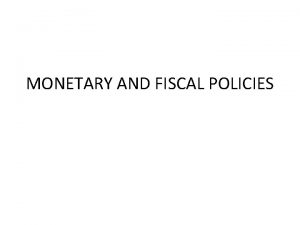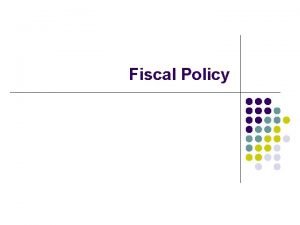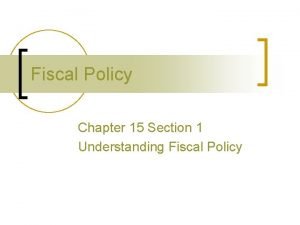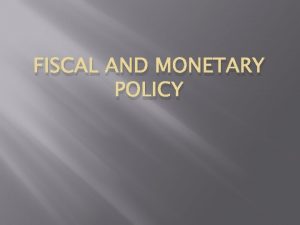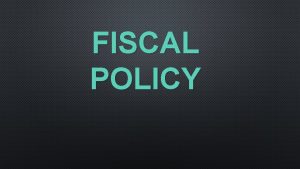Fiscal Policy SSEMA 3 What is Fiscal Policy







- Slides: 7

Fiscal Policy SSEMA 3

What is Fiscal Policy? • Sometimes in a market economy it is necessary to shift the demand curve – this is called demand-siding • Fiscal policy is the governments attempt to influence or stabilize the economy through taxing and government spending

Demand Side Policies • Fiscal policies are designed to increase employment by stimulating demand

How does the Government get involved? • The govt. is the only thing big enough to offset a spiraling economy • The govt. can undertake its own spending to offset the spending in other parts of the economy – like businesses • The government can also lower taxes to increase borrowing and push consumers to spend more • So, if business spending was down $50 billion – the government might spend $10 billion building a dam, $20 billion in grants to fix neighborhoods, and $20 billion in other ways • This spending would offset the $50 billion that businesses did not spend

• Or – instead of spending, the government could just reduce taxes giving consumers and businesses more purchasing power • P. 420 read – demand side policies

Supply Side Policies • Designed to stimulate output and lower unemployment by increasing production NOT by stimulating demand • The key goal here is to reduce the governments role in the economy • Reducing federal agencies • Less government spending • Deregulating firms – allowing them to produce at full capacity • See p. 425 figure 15. 7

Assignment • Read the chart on page 423 – Comparing Policies • How are both of these policies similar? • How are they different?



